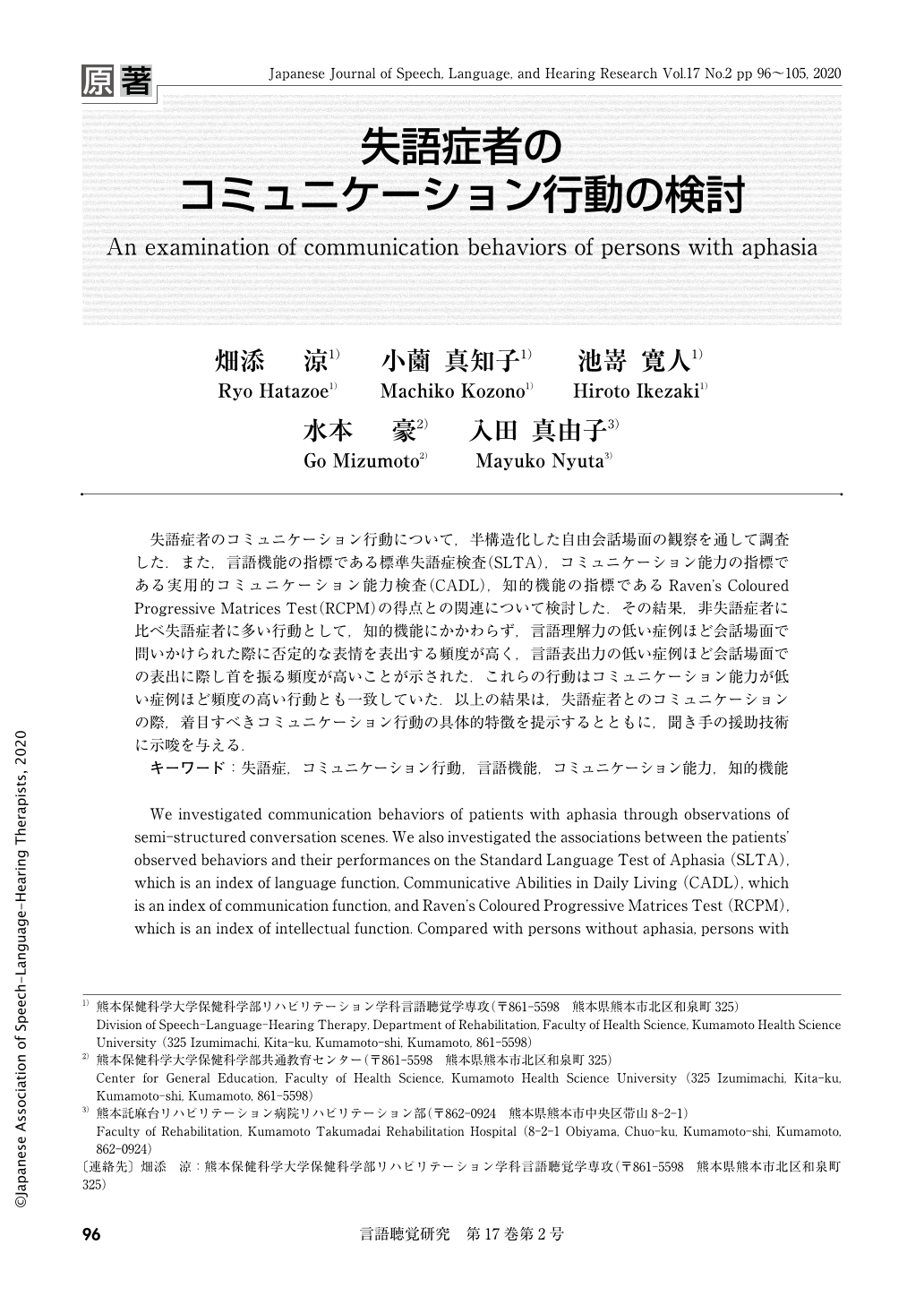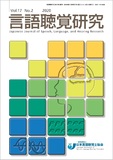Japanese
English
- 有料閲覧
- Abstract 文献概要
- 1ページ目 Look Inside
- 参考文献 Reference
- サイト内被引用 Cited by
失語症者のコミュニケーション行動について,半構造化した自由会話場面の観察を通して調査した.また,言語機能の指標である標準失語症検査(SLTA),コミュニケーション能力の指標である実用的コミュニケーション能力検査(CADL),知的機能の指標であるRaven's Coloured Progressive Matrices Test(RCPM)の得点との関連について検討した.その結果,非失語症者に比べ失語症者に多い行動として,知的機能にかかわらず,言語理解力の低い症例ほど会話場面で問いかけられた際に否定的な表情を表出する頻度が高く,言語表出力の低い症例ほど会話場面での表出に際し首を振る頻度が高いことが示された.これらの行動はコミュニケーション能力が低い症例ほど頻度の高い行動とも一致していた.以上の結果は,失語症者とのコミュニケーションの際,着目すべきコミュニケーション行動の具体的特徴を提示するとともに,聞き手の援助技術に示唆を与える.
We investigated communication behaviors of patients with aphasia through observations of semi-structured conversation scenes. We also investigated the associations between the patients' observed behaviors and their performances on the Standard Language Test of Aphasia (SLTA), which is an index of language function, Communicative Abilities in Daily Living (CADL), which is an index of communication function, and Raven's Coloured Progressive Matrices Test (RCPM), which is an index of intellectual function. Compared with persons without aphasia, persons with aphasia showed the following behaviors more frequently: 1) regardless of their intellectual function, persons with lower language comprehension were more likely to express negative facial expressions when they were asked questions, and those with lower language output were more likely to shake their heads when expressing themselves in conversational situations. These behaviors were consistent with the more frequent behaviors in cases with lower communication skills. The above results indicate specific features of communication behaviors that should be noticed when communicating with aphasic persons and provide suggestions for assistive listening techniques.

Copyright © 2020, Japanese Association of Speech-Language-Hearing Therapists. All rights reserved.


